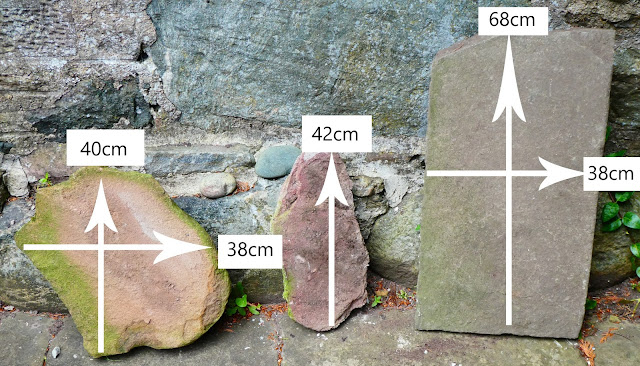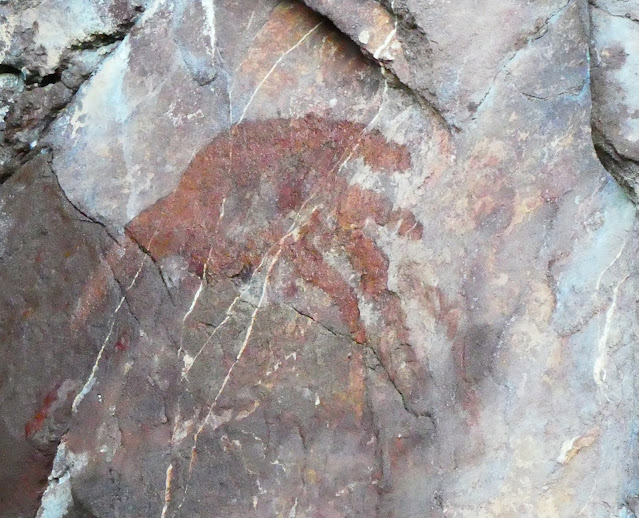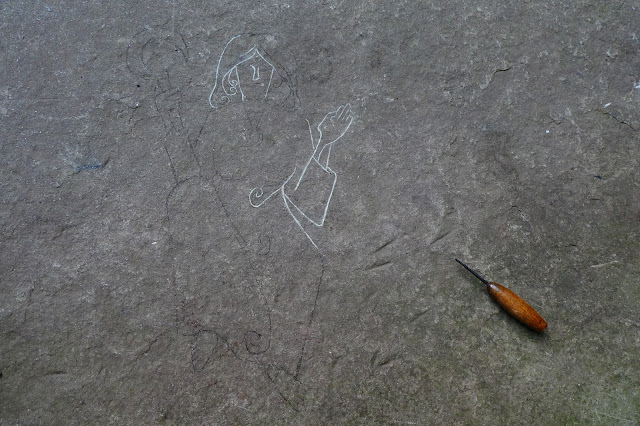No Stone Unturned
First tutorial today of the third and final semester in the approach to the resolution of this final project. Great to talk about my ideas so far and proposed developments, as well as a few off-the-cuff ideas, the type of which invariably pop into the head during such sessions. I'll start piecing together these ideas and possible inspirations soon, and spent the rest of the afternoon scrounging around the yard and adjoining field for likely pieces of sandstone for new stoneworking pieces. My attempts at wood-carving were non-starters and are not even worth sharing here, which is disappointing - but the stone-seeking was productive and I found a few good slabs (I'll worry about how to get them into the art school much nearer the time, but I do have a plan for that).
The largest slab (on the right) weighs in at 27kg - the one on the left is about 22.
Whilst thinking about what will be (tomorrow I'll start measuring up some of the other designs and get them traced on to these new stones), here's something that might have been...
A short but pivotal scene occurs in Book V, wherein Womba and her three travelling companions, on their sea-voyage to the Ylflands, encounter a venomous sea-serpent who very nearly defeats them. The episode, which was deliberately modelled after the many such occurrences in Homer's Odyssey, leaves the characters with a tangible memorial, thanks to the engraving (or scrimshaw) skills of Ffreow, the Ulfish smith:
"Womba sat, shook mist from mind:
“The sea-snake. What became of that?”
“It did its worst. We matched it well.
It left its mark then took to flight,
though left us with a relic. Look.”
And Womba turned, to see Ffreow
at rest on rocks, and in his hands
a broken tip of sea-worm tooth,
a cubit’s length, and carved with skill
upon it now, a scene of battle:
a cat-wife, ulf-man, wave-wyrm fought,
eternally, now etched in bone."
(Chapter XLIII)
Leaving aside the ethics of using real animal material (such as walrus ivory, say), I have neither the time nor the skill to engrave anything remotely resembling Ffreow's masterpiece onto such a surface - although the idea of creating a descriptive scene of text, which could then be 'illuminated' or immortalized not only by the characters within the text but outside the text itself - by me, in stone, or whatever else - lends tangibiity and reality to the events of the text and therefore establishes a point of contact between the reader and the 'reality' of which the text speaks. This is a point to consider over the next few weeks - serving as an actual 'illustration' of an object, itself an illustration of a scene, which furthers the nested, 'meta' aspect of the work.




Comments
Post a Comment